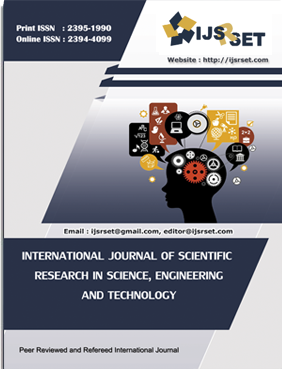A Complete Study of Digital Payment System in India
DOI:
https://doi.org/10.32628/IJSRSET2512411Keywords:
Unified Payments Interface, Digital Payments, Market Share Analysis, Fintech ApplicationsAbstract
This research paper presents an in-depth study of the Unified Payments Interface (UPI) ecosystem in India, focusing on its application dynamics and market leadership. Conducted in the Pune region, the study gathered primary data through a questionnaire survey of 82 respondents, complemented by extensive secondary data analysis to provide a comprehensive understanding of the industry.
UPI, launched in 2016 by the National Payments Corporation of India (NPCI), is a real-time payment system enabling seamless Peer-to-Peer (P2P) and Person-to-Merchant (P2M) transactions across multiple bank accounts via a single application. Its ease of use, security features, and instant transaction alerts have driven its widespread adoption, making it the cornerstone of India’s digital payment landscape.
This paper specifically examines five major UPI applications-Google Pay, PhonePe, Amazon Pay, Paytm, and BHIM-analyzing their market share, transaction volumes, and user preferences. The study highlights the rapid growth of UPI, which accounted for over 131 billion transactions worth nearly ₹200 lakh crore in FY 2023-24, with continued expansion into international markets.
PhonePe leads the market with approximately 47.5% share by transaction volume, followed by Google Pay and Paytm, reflecting competitive dynamics within the sector.
The findings underscore UPI’s pivotal role in India’s digitalization journey, driven by smartphone proliferation and government initiatives, and project sustained growth as the platform continues to evolve and expand its user base both domestically and globally.
📊 Article Downloads
References
Go Cashless: Digital Wallets, NEFT, IMPS, UPI, Debit Cards, Credit Cards https://www.bemoneyaware.com/blog/cashless-digital-walletsneft-imps-upi-debit-cards/
Premchand A., Choudhry A., Future of Payments-ePayments, International Journal of Emerging Technology and Advanced Engineering 5 (2015), 110-115.
Aparna Pavani (2016); a study on indian rural banking industry- issues and challenges, international conference on recent innovations in engineering, science, humanities and management (ICRIESHM), ISSN 978-93-86171-02-3, PP 154-163.
Gilbert, Scott, and Hio Loi. "Digital Currency Risk." International Journal of Economics and Finance 10, no. 2 (January 10, 2018): 108. http://dx.doi.org/10.553
Hayashi F.: Mobile Payments: What’s in it for Consumers?„ Economic Review” 2012. https://en.wikipedia.org/wiki/Mobile_payment
The Journal of Indian Institute of Banking & Finance june 2017.
Dr. Krishna Goyal and Vijay Joshi – Indian Banking Industry : Challenges and Opportunities, International Journal of Business Research and Management, Volume 3, Issue 1, 2012 5 McKinsey Report – Transform to Outperform
Sucheeta Kak, Sunita Gond (2015); ICT for service delivery in rural india- scope, challenges ans present scenario, IOSR journal of computer engineering, ISSN 2278-0661, pp 12-15.
Rahul Midha (2016); digital india: barriers & remedies, international conference on recent innovations in sciences, management, education and technology, ISSN 978-93-86171-04-7, pp 256-261.
Bansi Patel and Urvi Amin (2012) ; “ Plastic money: roadway towards cashless society”.
http://economictimes.indiatimes.com/wealth/spend/goingcashless-is-it-good-for- you/articleshow/55908649.cms
Demonetization effect: Flipkart, Amazon, Snapdeal witness 50% spike in undelivered COD Orders http://www.bgr.in/news/demonetization-effect-flipkart- snapdeal-witness-50-spike-in-undelivered-cod-orders/
Downloads
Published
Issue
Section
License
Copyright (c) 2025 International Journal of Scientific Research in Science, Engineering and Technology

This work is licensed under a Creative Commons Attribution 4.0 International License.




